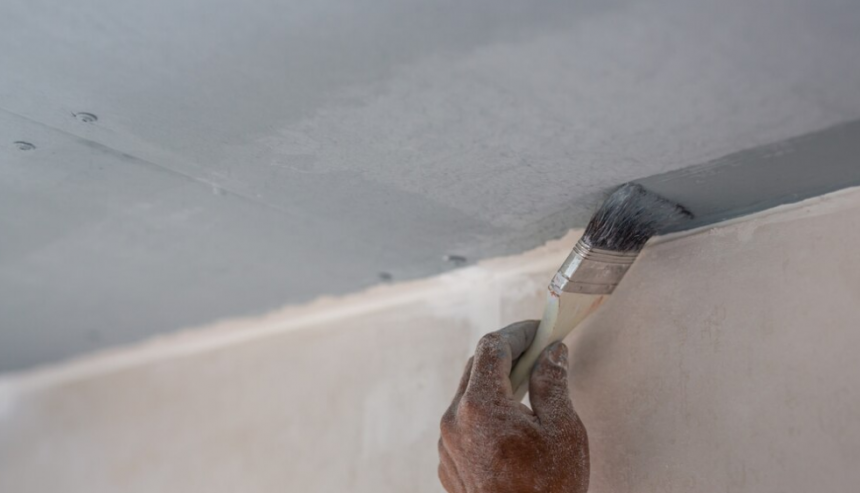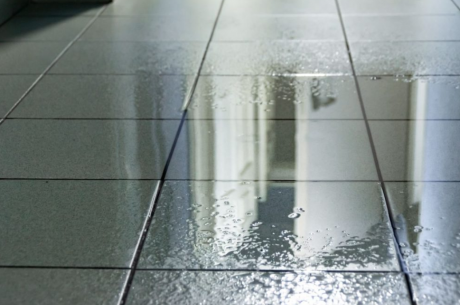Many people are quite curious on how to Fix a Bathroom Ceiling Leak. Which is why we have decided to write this helpful guide.
Picture this: you’re peacefully enjoying a hot shower after a long day when suddenly, you notice an unwelcome visitor – a dripping sound. Your heart sinks as you realize there’s a leak in your bathroom ceiling.
The prospect of water damage and potential mold growth can be daunting, but fear not! In this comprehensive guide, we’ll walk you through the step-by-step process of identifying, locating, and fixing a bathroom ceiling leak.
Whether you’re a seasoned DIY enthusiast or a novice homeowner, arming yourself with the right knowledge and tools can save you time, money, and a headache down the line. So, grab your toolkit and let’s dive into the world of bathroom ceiling repairs!
What causes Bathroom Ceiling Leak
Here are some common culprits:
1. Leaking Pipes:
One of the primary causes of bathroom ceiling leaks is a leaky pipe. These pipes can be located within the ceiling itself or within the walls surrounding the bathroom. Over time, pipes can corrode, develop cracks, or loosen at the joints, leading to water seepage.
2. Damaged Roof:
If your bathroom is situated on the top floor or directly beneath the roof, leaks can occur due to damaged roofing materials. Missing or damaged shingles, deteriorated flashing around vents or chimneys, or compromised roof valleys can allow water to infiltrate and trickle down into the ceiling below.
3. Poorly Sealed Fixtures:
Improperly sealed fixtures such as toilets, sinks, showers, or bathtubs can also be a culprit. Over time, caulking and grout around these fixtures can deteriorate, allowing water to seep through gaps and penetrate the ceiling.
4. Condensation:
In bathrooms with inadequate ventilation, excessive moisture can accumulate on the ceiling, leading to condensation. Over time, this moisture buildup can weaken the ceiling material and cause it to sag or develop water stains.
5. Cracked or Damaged Ceiling:
Sometimes, the issue lies directly within the bathroom ceiling itself. Cracks, holes, or weakened areas in the ceiling material can provide pathways for water to enter and cause leaks.
Types of ceiling water damage
Brown or Yellow Water Spots:
Brown or yellow water spots on the ceiling are common signs of water damage. These spots typically appear as discolored patches and are caused by water seeping through the ceiling material from above. When water infiltrates the ceiling, it can carry dirt, debris, or other contaminants, resulting in the formation of these unsightly stains. These spots not only detract from the aesthetics of the ceiling but also indicate an underlying issue that needs to be addressed to prevent further damage.
Cracked, Peeling, or Bubbled Paint:
Water damage can cause the paint on the ceiling to crack, peel, or bubble. When water penetrates the surface of the ceiling, it can weaken the bond between the paint and the underlying material, leading to these visible signs of deterioration. Cracked or peeling paint can expose the underlying substrate to further moisture infiltration, exacerbating the damage. Bubbled paint occurs when water gets trapped between the paint layers, causing them to separate from the surface and create bulges or blisters. Addressing the source of the water intrusion and repairing the damaged paint is essential to restore the ceiling’s appearance and integrity.
Sagging Plaster or Drywall:
Sagging plaster or drywall is another common consequence of ceiling water damage. When water saturates the ceiling material, it can weaken its structural integrity, causing it to sag or droop under the weight of the moisture. This sagging may be visible as a noticeable dip or bulge in the ceiling surface. Continued exposure to moisture can further degrade the plaster or drywall, leading to crumbling, delamination, or even collapse in severe cases. Repairing or replacing the affected ceiling material is necessary to prevent safety hazards and restore the ceiling’s stability.
How to Fix a Bathroom Ceiling Leak
Ceilings that have minor discolorations may only need to be repainted, as long as all moisture, mold and mildew has been removed.
If the leak has left only a small hole, fill it with joint compound and paint over it.
For larger areas of water damage, follow these steps:
- Start by removing all damaged materials such as insulation or drywall using a drywall saw.
- Cut back the remaining drywall to the closest joists, ensuring a clean and even edge.
- If necessary, attach 2- x 4-inch boards along the joists to provide a surface for attaching the replacement drywall.
- Measure and cut a new sheet of drywall to fit the gap, making sure it matches the thickness of the existing ceiling drywall.
- With the help of another person, lift the new drywall into place, ensuring it sits flush with the surrounding ceiling.
- Use a drill and drywall screws to securely attach the new drywall to the ceiling joists.
- Once the new drywall is in place, prime the repaired area to ensure proper adhesion of the paint.
- Finally, paint the entire ceiling to achieve a uniform finish.
Why is my ceiling wet in the bathroom?
Your bathroom ceiling might be wet due to various reasons, including leaking pipes, damaged roofing, poorly sealed fixtures, condensation, or cracks in the ceiling itself. Identifying the specific cause is crucial for effective repair.
Will a wet ceiling dry out?
A wet ceiling can dry out, but the drying process depends on factors such as the extent of water damage, ventilation, humidity levels, and the materials involved. Properly addressing the source of the moisture and facilitating airflow can help expedite the drying process.
Do I need to replace the ceiling after a water leak?
Whether or not you need to replace the ceiling after a water leak depends on the extent of the damage. Minor leaks may only require repair, such as patching up holes or replacing damaged drywall. However, severe water damage or mold growth may necessitate ceiling replacement to ensure structural integrity and prevent health hazards.
How long does it take for mold to grow in a wet ceiling?
Mold can begin to grow within 24 to 48 hours in a wet environment, such as a damp ceiling. However, the exact timeline depends on factors like temperature, humidity, and the presence of organic material for mold to feed on.
How do you dry a bathroom ceiling?
To dry a bathroom ceiling, you can use various methods such as increasing ventilation, using dehumidifiers, employing fans to improve airflow, and using moisture-absorbing materials like silica gel or desiccants. It’s crucial to address the source of the moisture to prevent further damage or mold growth.
Is a ceiling leak an emergency?
In many cases, a ceiling leak can be considered an emergency, especially if it’s causing significant water damage, posing safety hazards, or leading to mold growth. Prompt action is crucial to minimize damage and prevent further complications.
Who to call for a water leak in the ceiling?
For a water leak in the ceiling, you may need to call a plumber to identify and repair any leaking pipes or fixtures. If the leak is due to roof damage or other structural issues, you may also need to contact a roofing contractor or contact us on 877-750-7876 for water damage restoration.
In conclusion, addressing a bathroom ceiling leak promptly and effectively is crucial to prevent further damage and ensure the longevity of your home. Whether you’re dealing with minor discolorations, small holes, or larger areas of water damage, taking the necessary steps to repair and restore your ceiling can save you time, money, and headaches down the line.
Regardless of the extent of the damage, addressing a ceiling leak promptly can prevent safety hazards, structural issues, and mold growth, ultimately preserving the integrity and value of your home.
Remember, if you’re unsure about tackling the repairs yourself, don’t hesitate to seek professional assistance. With the right knowledge, tools, and expertise, you can restore your bathroom ceiling to its former glory and enjoy peace of mind knowing your home is safe and secure.



